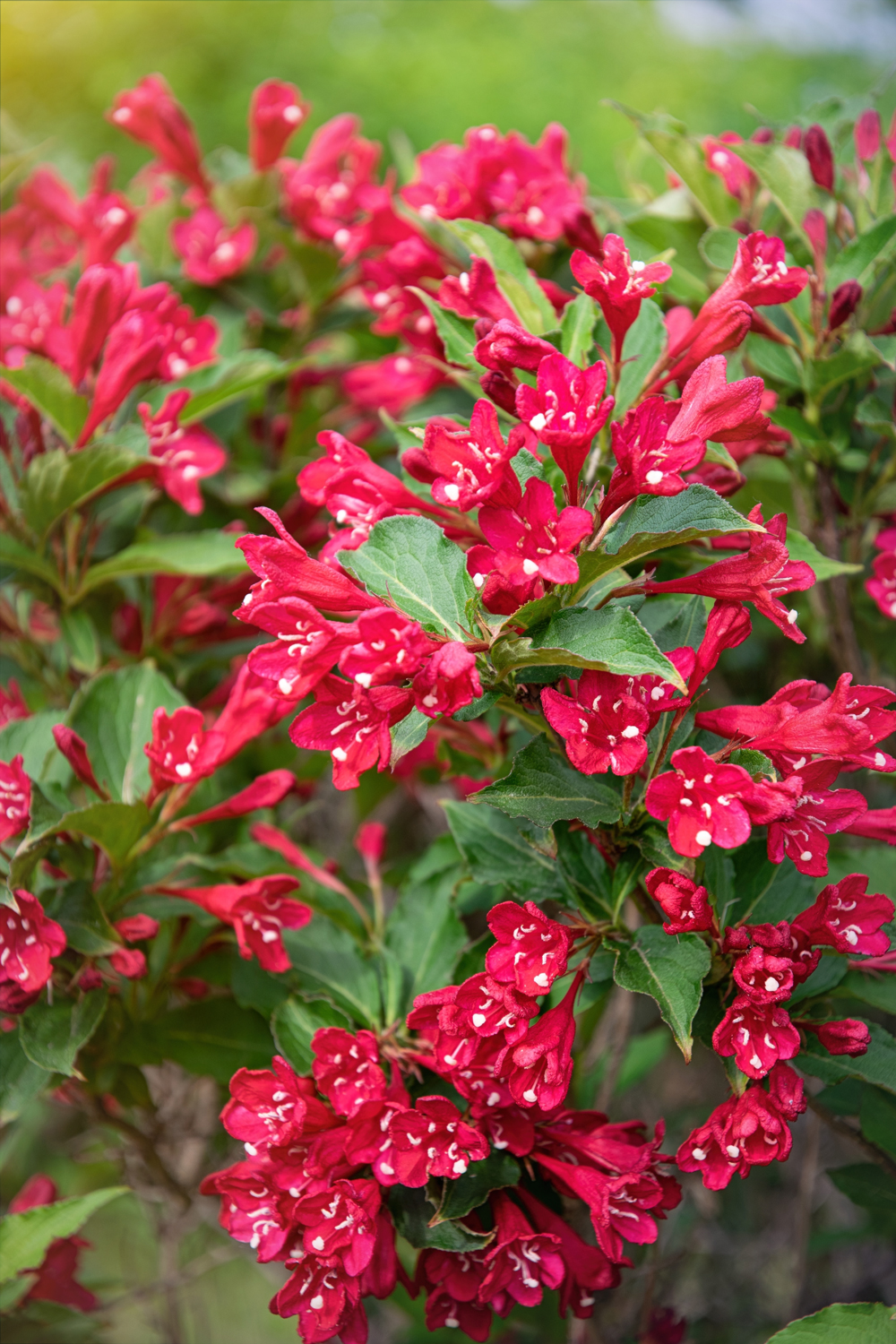Your Guide to Planning, Planting and Growing Flowering Trees and Shrubs
Trees and shrubs have an important role to play in every home landscape. You can use them to help to define garden rooms, frame a view, increase privacy, provide scale, create shade, and add seasonal interest with their foliage, flowers and fruit.
Plan for Success
Sun and Shade. Most flowering trees and shrubs perform best when they are planted in full sun. While some grow well in or even prefer part shade, most need a minimum of 6 hours of sun per day. Before planting, check the plant's light requirements and select a location that matches its needs.
Hardiness Zone. Some flowering trees and shrubs are able to tolerate colder temperatures than others. Flower buds are usually more sensitive to cold than the plant itself. To ensure a good display of flowers, make sure you choose plants that are hardy for your growing zone.

When to Plant
Bare root trees and shrubs are shipped in late winter or early spring and usually arrive in a dormant state. For best results, plant them upon arrival. Trees and shrubs that are purchased in containers may be planted in spring, summer or fall.
How to Plant Flowering Trees and Shrubs
Start by soaking the roots in a bucket of water for up to an hour. Loosen the soil in the planting area to a depth of 12-18.” Mix in several handfuls of compost and approximately ½ cup of all-purpose granular fertilizer (follow package directions). Now remove enough soil to accommodate the roots, making a hole that is as deep as the roots and twice as wide.
Make a small mound of soil in the bottom of the hole and spread the roots evenly over the mound. The crown of the plant (where stem and roots meet) should be even with the natural soil level. Backfill the hole and press gently to firm. If you wish, you can create a 1-2” berm around the outer edges of the soil to help retain water. Water slowly and deeply to eliminate any air pockets and make sure the roots are in good contact with the surrounding soil.

Where to Plant Flowering Trees and Shrubs
Flowering trees and shrubs may be planted almost anywhere around your home. Add them to existing gardens, use them to beautify new areas of your yard, or to create privacy. Many flowering trees and shrubs also provide nectar and berries for wildlife.
Before planting, be aware of the plant’s preferred sun exposure and choose a place where it will get the right amount of light. The soil should be loose and well-drained, and you should be able to get water to the plants if natural rainfall is inadequate. Be sure to also consider the tree or shrub's mature size and give it enough space to reach its full potential.

What to Expect
Once planted, it takes most trees and shrubs a full growing season to settle in and get their root system established. During this time, they should be watered deeply (enough to reach the root zone) once per week when natural rainfall is insufficient. Mulching the surface of the soil around the plant with shredded bark or shredded leaves will help keep the roots moist and minimize weed growth. In the second year, the plant will begin to grow more vigorously. It can also go for longer periods without water, though this depends on your climate and growing conditions. Flowering may not begin until the third year, and will increase as the plant matures.

How to Care for Flowering Trees and Shrubs
Flowering trees and shrubs may be pruned to control the size and shape of the plant. Those that flower in the spring should be pruned immediately after the flowers fade. If you prune them later in the growing season, you will remove some of next year’s flower buds. Trees and shrubs that bloom in the summer should be pruned in late winter or early spring before new growth emerges.
If branches are broken due to storms or other events, they should be pruned away. Use sharp pruning tools and make clean, smooth cuts to promote fast healing.
Trees and shrubs may be fertilized in late fall or early spring. Use a balanced fertilizer or one that is slightly higher in phosphorus. Always follow package directions for application rates. Over-fertilizing can be harmful to plants.
